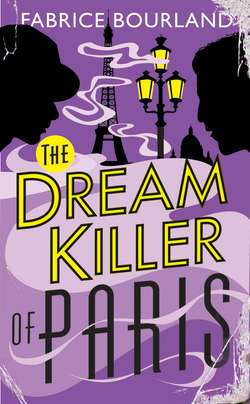Читать книгу The Dream Killer of Paris - Fabrice Bourland - Страница 6
На сайте Литреса книга снята с продажи.
ОглавлениеFOREWORD BY THE PUBLISHER
As readers may remember, we were sent the manuscript of The Baker Street Phantom1, Andrew Fowler Singleton’s previous adventure, in the post and were so impressed that we decided to publish it as quickly as possible. Readers may also recall that William H. Barnett, son of John W. Barnett, the detective writer’s executor, told us in his accompanying letter that there were several folders in his father’s attic that might contain more unpublished stories.
We immediately contacted him and he confirmed that twelve files had been found in a trunk and that these files did indeed contain unpublished manuscripts written by the celebrated detective. He had not yet had time to read them all but said he would be happy to send us the second adventure soon, a tale which, in his view, was just as disconcerting as the first.
A few days later we duly received a large envelope from Northampton containing 235 typed pages, carefully protected in a blue folder. On the first page was the title The Dream Killer of Paris in capital letters.
Naturally, we read the manuscript straight away. This time the adventure had taken Singleton, in October 1934, to Paris and its literary and spiritualist circles, as well as to Vienna. We must warn readers that, as in his previous tale, the facts appear to be highly implausible. And yet, as a result of a number of checks carried out over the past few weeks, in particular at the archives of the French police force and the Institut Métapsychique International, we can confirm that this account is an accurate reflection of events.
Unlike The Baker Street Phantom, where it was difficult to determine when it had been written, in this instance a sentence in the epilogue (the reference to the ‘young man’) seems to indicate that the manuscript was written between 1947 and 1950. As for the young man in question, our attempts to find him have been unsuccessful. We don’t know therefore whether Auguste was eventually admitted to the Academy or not.
All things considered, this second document sheds a little more light on why the writer, and later his legal executor, wanted to keep some of his cases out of the public eye. In the stories we were already familiar with, bodies might disappear without explanation, castles be filled with ghosts, and evil creatures float in the air but, in the end, the real guilty parties always proved to be made of flesh and blood. It is probable that Andrew Fowler Singleton, mindful of his reputation, was reluctant to publish those cases which had led him to enter a realm outside conventional understanding. He knew that the excessive scepticism which poisons our age would make it impossible for these tales to be taken seriously.
And perhaps he was right – the incredulity already expressed by many readers of Phantom is the best proof of that.
Stanley Cartwright, 3 May 2007
Notes
1 The Baker Street Phantom - Gallic Books
